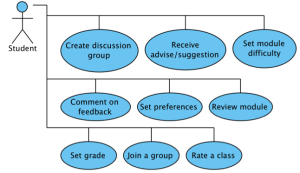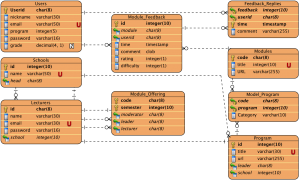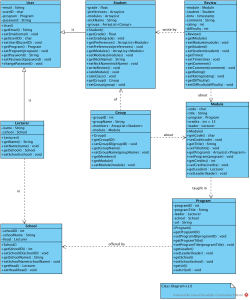One of the main feature of a system is the interactivity between it and its users. The interaction is illustrated by using use case diagram. Here we represent the main actor of the system where the entire system is mostly used and interacted with by this user, student actor.
The diagram shows how the student will interact with module review social network and what actions he/she will perform. The other actors are not included in this version of use case diagram because at this point their interactivity with the system is very limited at this stage. These actors are the lecturer who can comment on review or reply on a comment. The system which analyze the student input as preferences and generate a suggestions or a list of suitable module based on student grade, pre-set preferences, rating and difficulty level of a module.



